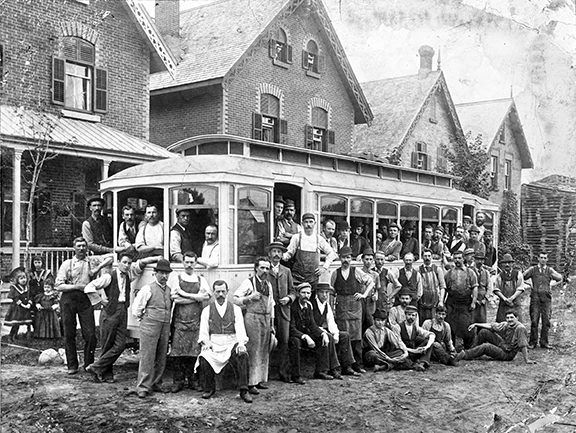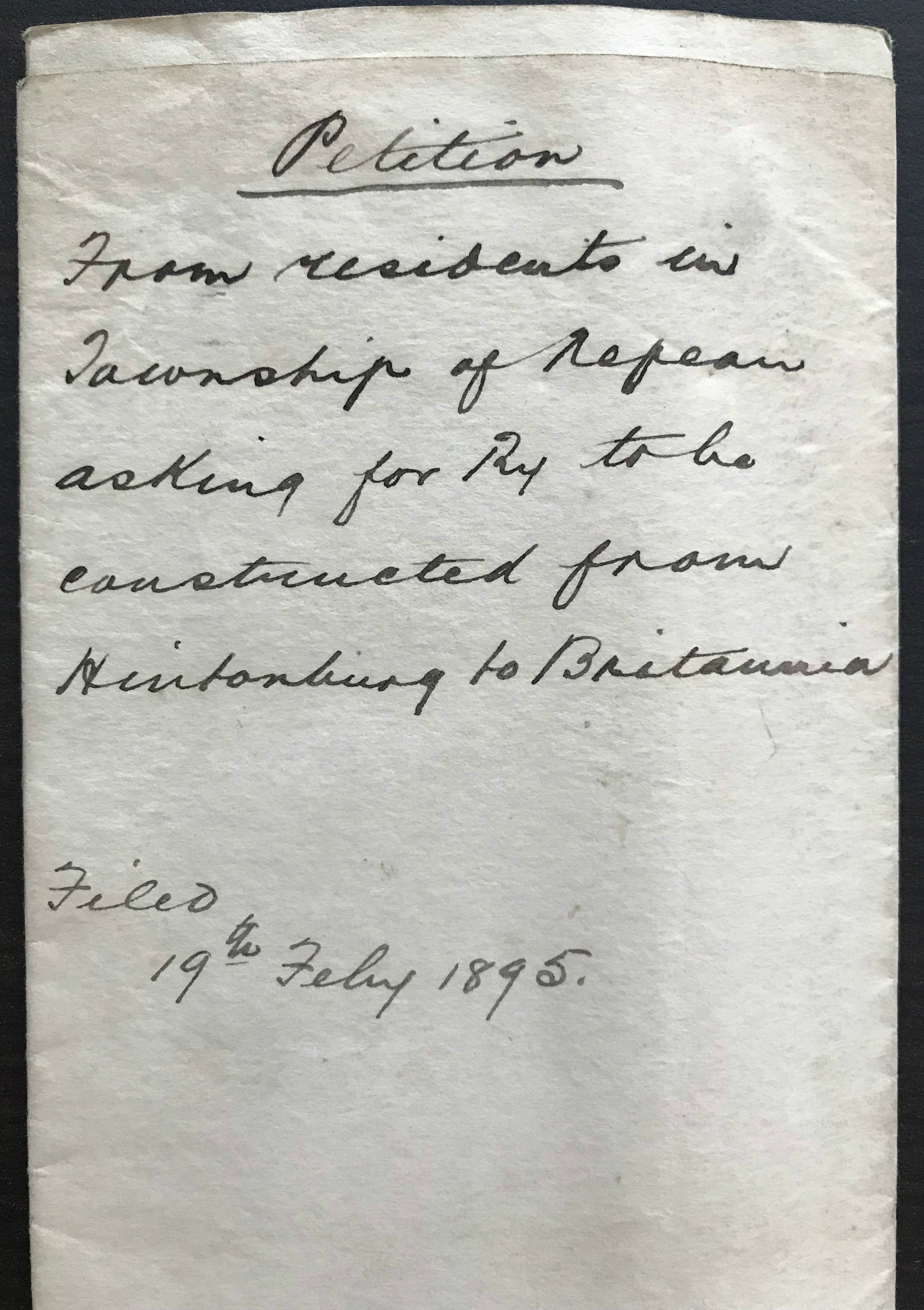
Last fall, Ottawa’s light-rail transit veered slightly off track with OC Transpo postponing the opening of the project from May to November 2018. The Confederation Line, the first stage of the light-rail system, will cost the city $2.1 billion and span 12.5 kilometres.
It’s hard to believe that from 1891 to 1959 Ottawa actually had a robust transit system that traversed over 48 kilometres with routes that mirrored today’s light-rail plans — plus it was electric-powered. That popular streetcar system was known as the Ottawa Electric Railway.
Paul Henry, chief archivist at the City of Ottawa Archives said many streetcar routes were determined based on traffic flow of Ottawa commuters. In other cases, Ottawans could petition the Ottawa Electric Railway like this 1895 petition.

Archivist Signe Jeppesen noted that the Britannia Beach expansion was an easy one for the Ottawa Electric Company since the company also owned property at Britannia Park at the time.
Britannia Park was also the place to partake in the hip-gyrating rock and roll scene of the 1950s because it had outdoor pavilions that encouraged dancing, said Henry.
“From a sociological perspective it’s interesting to see the connection between the streetcar enabling people to get around town, and the activities that they undertook once they had access to a stable transportation system,” Henry said.
Not unlike Ottawa’s light-rail transit system today, Ottawa’s streetcars had their fair share of controversies.
“What’s fascinating is that the directors of the Ottawa Electric Railway and the directors of the Ottawa Car Company, which built the streetcars, were the same people,” said Henry. He said that the issue of conflict of interest would never have been allowed today.
Henry and Jeppesen confirmed that the popularity of Ottawa’s streetcars peaked in 1941 with an annual ridership of 39.8 million in a city of just 154,000 people, which ultimately created wear and tear on the streetcars.
“In 1899, a mile of track, or 1.6 kilometres, would have cost them the equivalent of $71,000 today. The capitalization costs of an effective, well-laid out streetcar system was challenging at best, even if you had the flexibility in a private sector enterprise,” said Henry.
Ottawa’s streetcars were at a crossroads when amendments to the Income War Tax Act cost Ottawa Electric Railway over $1-million in 1945, according to Jeppesen. Three years later, the city-owned Ottawa Transit Commission purchased the streetcars.
It was a confluence of factors that led the city to decommission the streetcar system: large swaths of track had to be rebuilt and streetcars were in need of major repairs, as reported by The Ottawa Journal in Apr. 29, 1959.

“It was born to the incredulous acclaim of thousands on a June day in 1891,” wrote Thomas Kerr of the streetcar in the Ottawa Journal on Apr. 26, 1960. “It died to the nostalgic acclaim of other thousands in April, 1959.”
Although Ottawa’s streetcar tracks have been ripped up and paved over, Henry said the streetcars left a profound legacy in its triumph of technology over environment.
“Local solutions were invented like the snow sweeper car to deal with a unique Ottawa problem. They were then exported by the Ottawa Car Company to other consumers of streetcars,” he said.
The City of Ottawa Archives said it hasn’t heard if the city plans to pay tribute to the bygone streetcars ahead of the Confederation Line’s maiden voyage this fall.
